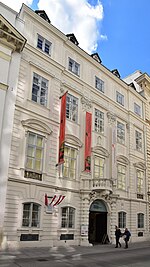Austrian Development Agency
The Austrian Development Agency GmbH (ADA) is the operational unit of the Austrian Development Cooperation. The ADA is a public-benefit, non-profit, limited liability company headquartered in Vienna. It is owned by the Republic of Austria, and represented by the Federal Ministry for Europe, Integration and Foreign Affairs. On behalf of the federal government of Austria, ADA plans, finances, and supports development programs and projects in Africa, Asia, South-Eastern and Eastern Europe, and the Caribbean. The goal of ADA is to improve conditions of life in developing countries and assist partner countries in their sustainable development. It also promotes projects in development communication and education in Austria to advance discussion on development cooperation. The ADA's objectives and tasks are defined in the Federal Development Cooperation Act (DCA 2002) as per amendments made in 2003. The respective Three-Year Programme on Austrian Development Policy sets the geographical and substantive priorities. As of 2021, the Austrian Development Agency is led by Friedrich Stift.
Excerpt from the Wikipedia article Austrian Development Agency (License: CC BY-SA 3.0, Authors).Austrian Development Agency
Schauflergasse, Vienna Innere Stadt
Geographical coordinates (GPS) Address Nearby Places Show on map
Geographical coordinates (GPS)
| Latitude | Longitude |
|---|---|
| N 48.209 ° | E 16.3636 ° |
Address
Bundeskanzleramt
Schauflergasse
1010 Vienna, Innere Stadt
Austria
Open on Google Maps











